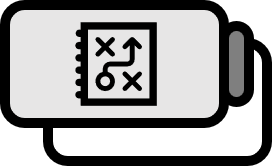Genomics and Genes in Bioinformatics
Definition
- The entire collection of genetic material in an organism is called a genome.
- A segment of the genome that serves as the unit of genetic traits is called a gene. Specifically, in eukaryotes, it consists of introns and exons.
Explanation
In fact, the term genome is seldom used as a pure Korean term, and it is commonly referred to as 게놈 or 지놈. Both genome and gene, especially gene, are terms that even ordinary people who are not familiar with biotechnology frequently use, amidst countless misconceptions and misunderstandings. The word genome was created by attaching -ome, which means a complete set, to gene, which indicates a genetic factor. From the perspective of studying bioinformatics, understanding these concepts in detail may not matter, but knowing what exons and introns are in the genetic sequence and being able to express them accurately is necessary. Let’s check the following obvious facts one by one:
- Genes are not particles: Since a gene is part of the genome, it is physically a part of a chromosome and, informationally, part of the genetic sequence. It refers to a specific section of DNA, and if a certain trait is revealed, it can be called a gene related to that trait. For example, if the length of chromosome 1 is 100, and from 20 to 30 increases the risk of liver cancer, then that part can be called the liver cancer gene.
- Introns can also be part of a gene: Introns do not participate in protein synthesis, but they can be part of a gene. Since a gene is defined as a segment, if there’s no reason to exclude introns, they should be included in the gene.
- Not all parts of a chromosome necessarily constitute a gene: Whatever the hidden truth, parts unrelated to genetic traits are not genes. Of course, later studies may reveal they are involved in certain traits, or they could impact something unforeseen. However, in cancer research, the gene that slightly affects the hardness of the fourth toenail of the left foot, even if it is an actual gene, is not necessarily referred to as a gene.
- Each individual’s genome is different: The genome of an individual of one species is markedly different from that of another species, and considering the vast amount of genetic information, the reasons for these marked differences are very slight. Thus, understanding the genome of an individual almost amounts to understanding the entire species. This is similar to how, despite our differences, the fact that we are all human doesn’t vary much. However, this does not mean all humans are the same; it simply indicates that a genome is unique to each individual.
